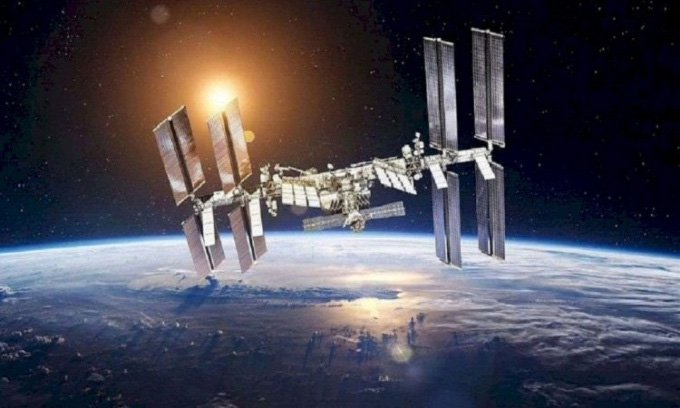NASA will allow the International Space Station to fall into an uninhabited ocean area known as Point Nemo in 2031.
Point Nemo is located 4,800 kilometers from the coast of New Zealand and 3,200 kilometers north of Antarctica. It is so remote that the closest individuals to this area are the astronauts aboard the International Space Station (ISS), orbiting 420 kilometers above Earth. When it ceases operations in 2030, the ISS will plunge into this distant site, similar to other space stations, satellites, and debris. Point Nemo is considered the graveyard for space objects.

The ISS will operate until the end of 2030. (Photo: NASA)
Many space-faring nations have dumped space debris in the vicinity of Point Nemo, named after Captain Nemo from Jules Verne’s novel “Twenty Thousand Leagues Under the Sea” from the 1970s. Also known as the Oceanic Pole of Inaccessibility or the Uninhabited Area of the South Pacific, the exact coordinates of this world’s most remote location were calculated by Russian-Canadian engineer Hrvoje Lukatela in 1992.
Since 1971, more than 263 pieces of space debris have sunk at Point Nemo, including Russia’s Mir space station and NASA’s first space station, Skylab, according to a 2019 study. The debris is not a complete testament to the history of space travel but rather scattered remnants across a vast area. “This is the largest ocean area without any islands. It is also the safest area for debris re-entering the Earth’s atmosphere,” said Holger Krag, director of the Space Safety Program Office at the European Space Agency (ESA).
Point Nemo shows virtually no signs of human life. Besides the space debris at the seabed, microplastics were discovered in the seawater when yachts competing in the Volvo Ocean Race passed through the area in 2018. Space debris, such as old satellites, falls back into Earth’s atmosphere daily, though most go unnoticed as the fragments burn up long before reaching the ground. Only larger debris, like spacecraft parts or rocket stages, can pose a minor threat to humans and infrastructure on the surface. Space agencies and operators must plan carefully in advance to ensure debris falls into Point Nemo.
In the case of the ISS, NASA indicated that the station will begin maneuvers to exit its orbit in early 2026, lowering its altitude to fall to Earth in 2031. The exact timing of the operation depends on the solar cycle and its effects on Earth’s atmosphere. Active solar conditions often cause Earth’s atmosphere to expand, increasing drag on the ISS, according to NASA.
Space agencies and commercial operators must also notify relevant aviation and maritime authorities, typically in Chile, New Zealand, and Tahiti, about the location, timing, and area of the debris fall. Authorities will issue notifications to aircraft and vessels. According to Krag, a significant issue is that many pieces of debris from rocket stages and spacecraft fall uncontrollably through Earth’s atmosphere. In June 2021, NASA criticized China for irresponsibility after debris from the Long March 5B rocket fell into the Indian Ocean.
The Long March 5B rocket, standing 33 meters tall and weighing over 18,000 kilograms, launched a module of China’s space station into orbit on April 29, 2021. After exhausting its fuel, the rocket fell uncontrollably in space until it was pulled by Earth’s gravity. Krag noted that an average of 100 to 200 tons of uncontrolled space debris falls through Earth’s atmosphere each year.
At least 26,000 pieces of space debris the size of a tennis ball or larger orbit Earth, capable of destroying satellites upon collision. Over 500,000 fragments are large enough to damage spacecraft or satellites. More than 100 million pieces of debris as small as a grain of salt could puncture a spacesuit.
Allowing space debris to fall to the ocean floor at Point Nemo is the least bad option, according to Vito De Lucia, a professor of law at the Norwegian Centre for the Law of the Sea at the Arctic University. However, we do not know much about the deep-sea environment in this area. Some studies suggest that due to ocean currents in the region, Point Nemo is not actually biologically diverse. Marine biologist Autun Purser, a postdoctoral researcher at the Alfred Wegener Institute in Bremerhaven, Germany, shared that he has been near Point Nemo and that the seabed is home to sea cucumbers, octopuses, and strange fish.
Krag stated that space debris falling into the ocean is typically made of stainless steel, titanium, or non-toxic aluminum. “Re-entering debris does not float but sinks deep down and poses no danger to ships. Compared to many lost containers and shipwrecks, the amount of hardware from space debris is relatively small,” Krag said.


















































